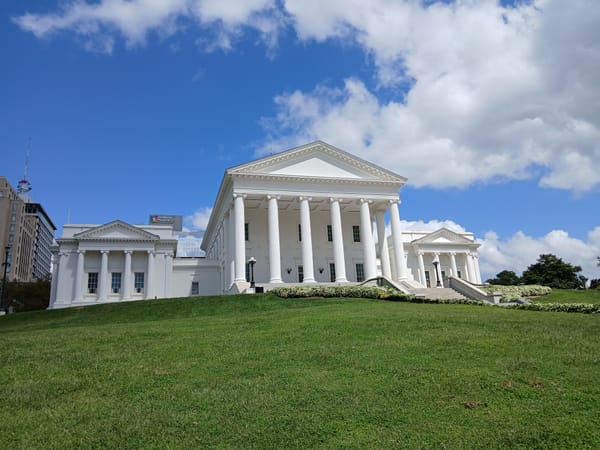Abandoned Buildings
Ben Brumfield - Feb 5, 2010
I'm familiar with the area, since my family has been in Pittsylvania Co, VA for a very long time, and still has land there. (In fact I drive NC-86 a few times a year from RDU.) To answer your question, there are altogether different forces at work in the area than those operating in the suburbs of Tucson. Eighty years ago, around the time when the house you photographed was new, this house was probably the home of a farmer, who likely owned an average size tobacco farm of 50-200 acres. Also on that farm would be a fairly new frame-built tenant house for a sharecropper or tenant farmer, and probably the log cabin the farmer had lived in before building the house in the picture. All of the houses--except perhaps the old log one--were occupied by families. Thirty years later, post-War prosperity had allowed the farmer to build a new brick house with central heat, and both his and the tenant's children had moved away. The house in the photo is rented out, and the old tenant house is either vacant or occupied by the now-elderly couple who live there alone. Twenty years after that, the land and tobacco quota is rented to someone else, and the retired farmer lives in their brick house. The old tenant house is vacant, and the house in your photo is no longer worth the effort of renting, as tenants can find more modern housing and those that can't are more trouble than they're worth. The empty house is maintained for a decade or so, though less aggressively as the retirees become less mobile. By now, the property has changed hands, passing to out-of-town children, retirees looking to move to the country, or somebody else who sees a smallish-but-pleasant fifty-year-old brick house on a lot of land, with a few outbuildings and a couple of dilapidated old houses. If any mortgage was involved on the property, the house in the photo was valued at zero, and I'll bet that if it had been well maintained it would still have constituted a tiny fraction of the appraised value of the property. If it had been maintained, it still would be expensive to heat, with antiquated wiring and inconvenient plumbing. This is far less attractive than the housing a trailer or modular home could offer. And who would live there? The mechanization of tobacco farming in the 1970s greatly reduced rural population density and the 1990s demise of the tobacco and cotton mill economy has emptied the area of its young. It's a lovely photo, by the way. I hope you keep putting them up.
